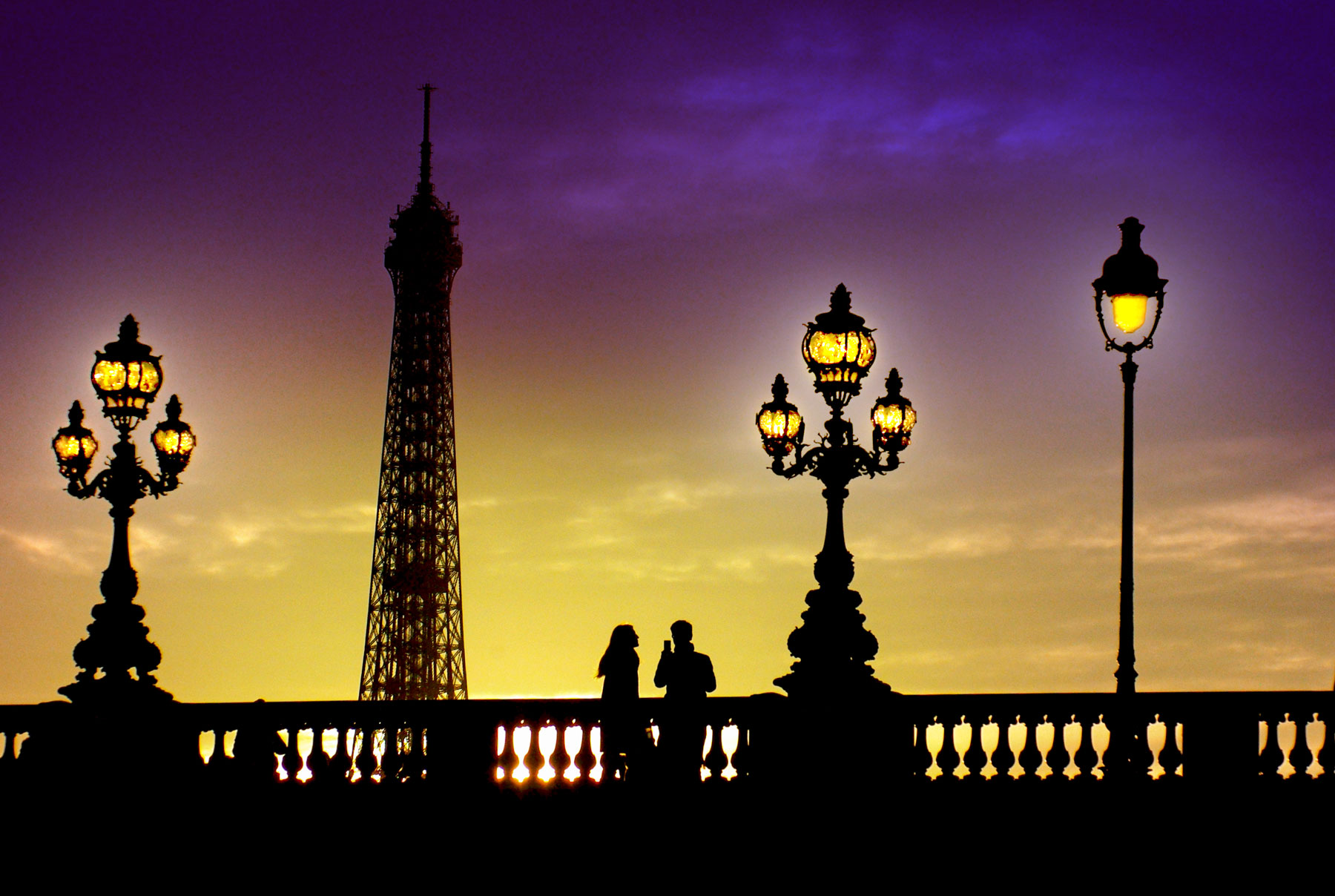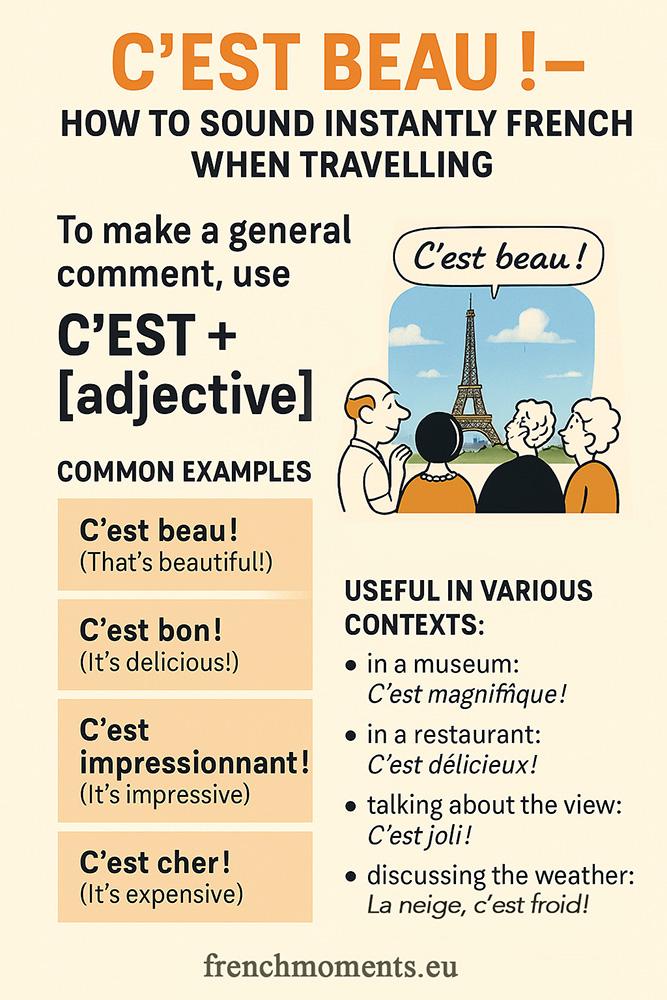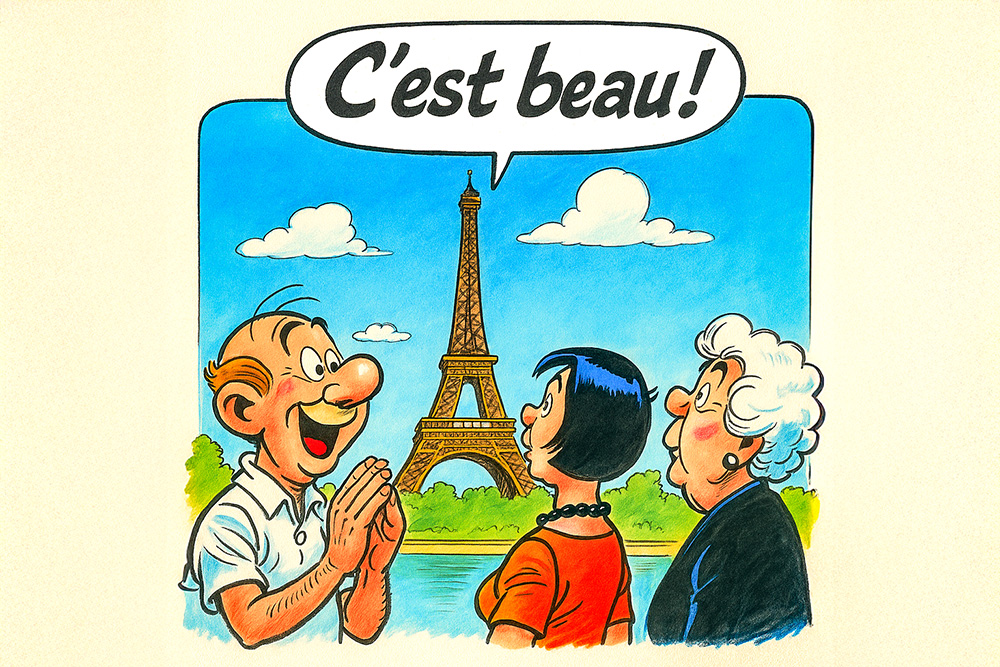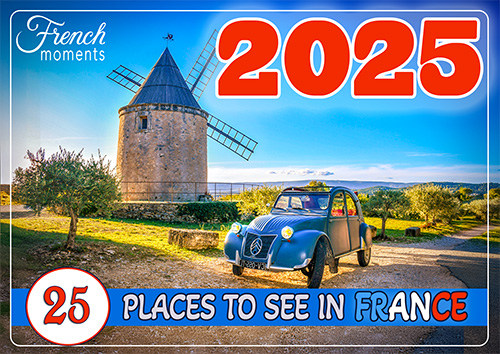Bonjour!
I can’t count how many times I’ve heard someone say “C’est belle” when I showed them a photo I’d taken in Paris—perhaps of a sunlit street in Montmartre, a view from the Pont Alexandre III, or the Eiffel Tower in spring:

The Eiffel Tower and Pont Alexandre III © French Moments
The sparkle in their eyes, the sheer joy they were expressing… I never had the heart to correct them.
At least, not right then.
But as a French teacher, I do have a duty to step in eventually.
Not to spoil the mood, of course, but to help learners speak like real French people do.
And here’s one of those little French secrets: when you want to make a general comment like “It’s beautiful” or “It’s expensive”, the safest, most French-sounding way is to say…
👉 C’est + adjective
That’s it. Short, simple, and wonderfully versatile.
🧀 Why do the French say “C’est beau” and not “Il est beau”?
It’s all about making a general comment—on a painting, a landscape, a meal, a song, a feeling.
If you're admiring a sunset over the Loire Valley, or a bite of tarte Tatin that makes you close your eyes in delight, what you’re really saying is:
👉 “This is beautiful.” or “This is delicious.”
In French, that becomes:
- C’est beau ! (It’s beautiful!)
- C’est bon ! (It’s good / tasty!)
- C’est original ! (That’s creative / unusual!)
- C’est cher ! (It’s expensive!)
These are neutral, all-purpose expressions.
No need to worry about matching genders or plurals. You don’t have to know whether "tarte" is feminine or not.
Just say C’est bon, and enjoy the moment.
🖼 When do we say “Il est…” instead?
Only when you’re talking about something specific—and you know its gender. That’s when the agreement kicks in:
- Il est beau, ce tableau. (That painting is beautiful.)
- Elle est belle, cette église. (That church is beautiful.)
- Elles sont belles, les fleurs. (The flowers are beautiful.)
But let’s be honest: if you’re travelling in France and just want to say how much you love something, stick to “C’est + adjective.”
It’s easy, natural, and wonderfully French.
🍷 How to use it like a local – real-life examples from your next trip
- In a market in Provence: C’est cher ! (Yes, €12 for a jar of olives might be pushing it.)
- In a patisserie in Paris: C’est bon ! (Trust me, you’ll say it more than once.)
- Looking out over the lavender fields in July: C’est magnifique !
- After one too many steps in Montmartre: C’est dur, là ! (It’s hard, this bit!)
- Listening to a street accordionist: C’est émouvant…
🥖 Final tip: Less grammar, more pleasure
When in doubt, just use “C’est”.
It’s a little phrase that covers so much ground—and will make your French sound more confident and effortless.
No need to worry about gender. Just enjoy what you see, hear, or taste, and say:
👉 C’est… followed by any positive (or negative!) adjective:
beau, bon, joli, cher, magnifique, drôle, original, simple…
Just don’t say C’est belle. (Unless you’re talking about Disney’s Beauty and the Beast 😉)




